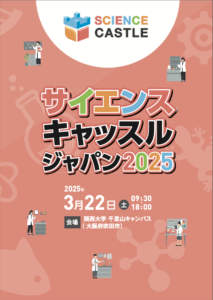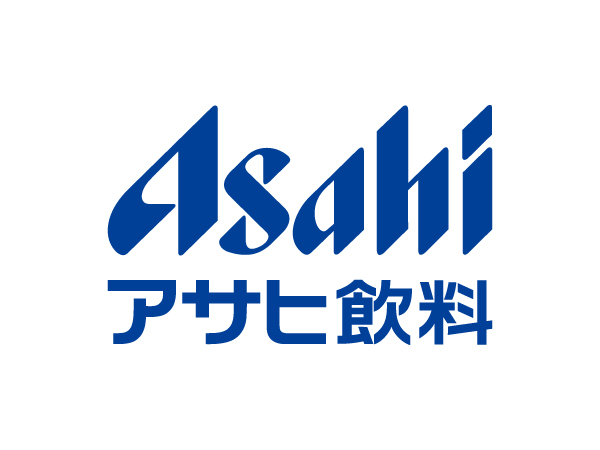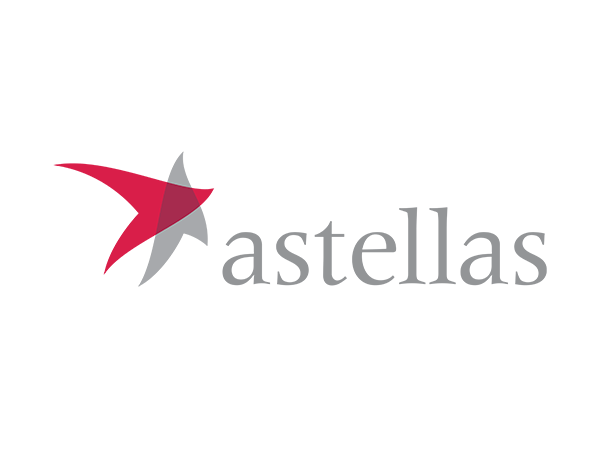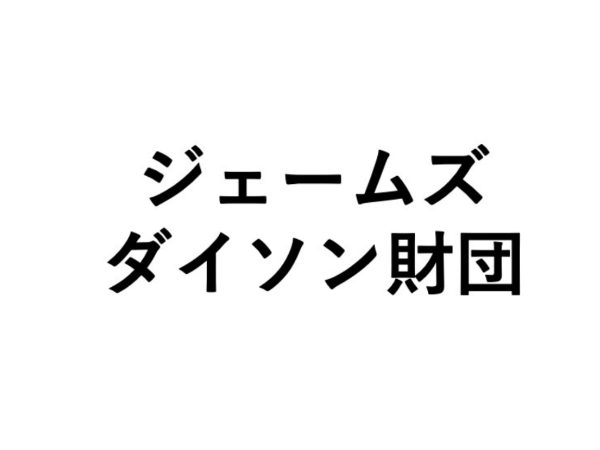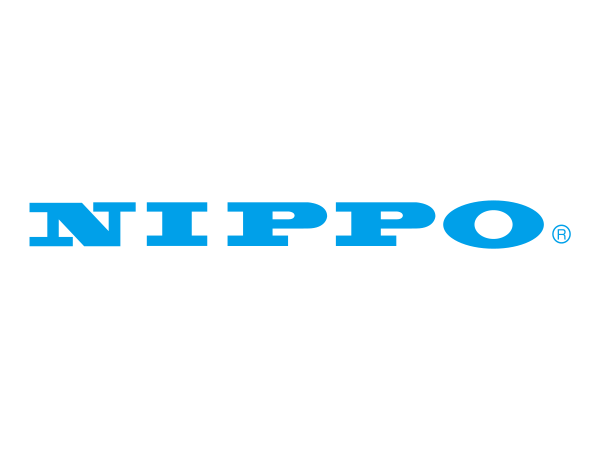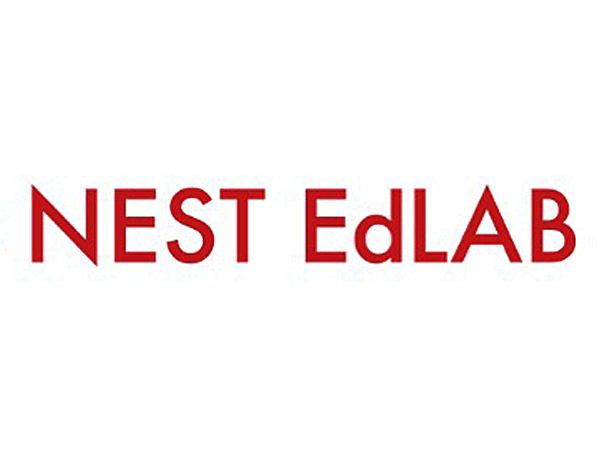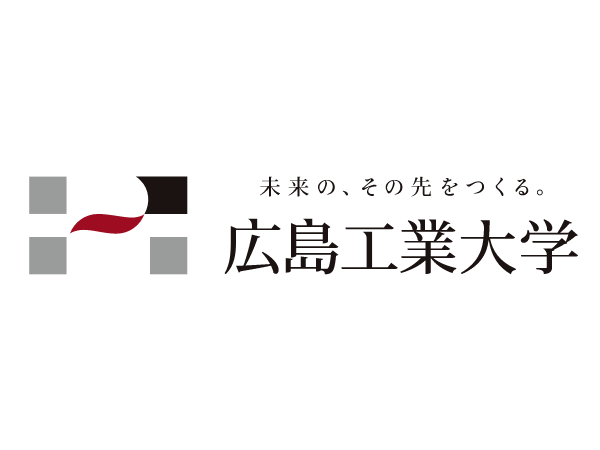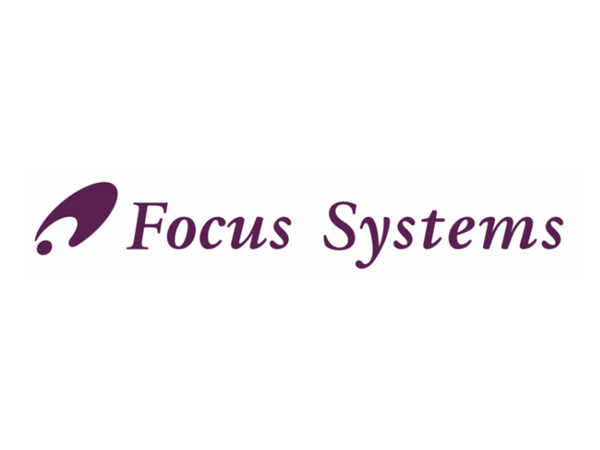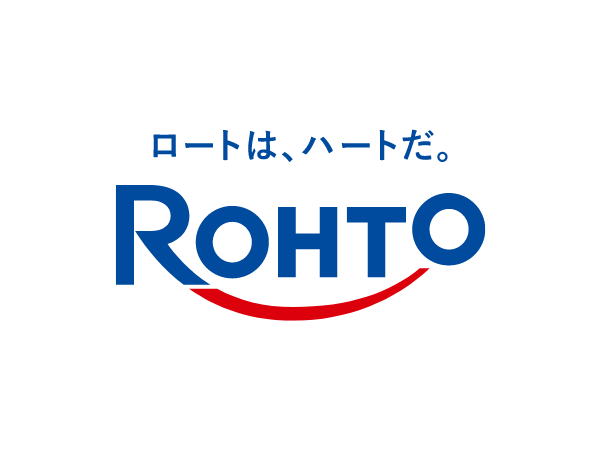- HOME
- Future Conferences
- Science Castle Japan 2025
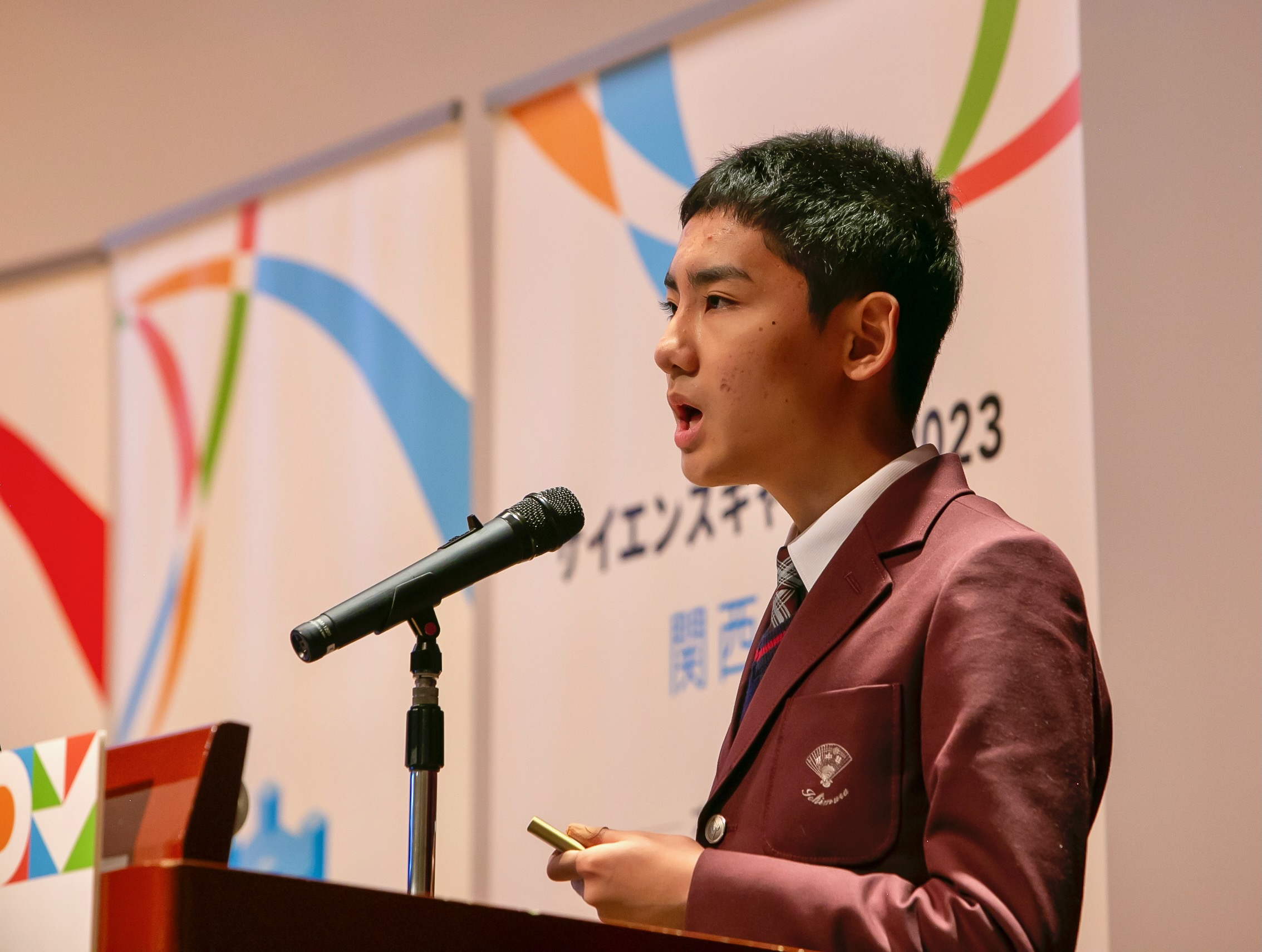
Science Castle Japan 2025
Kansai University, Senriyama Campus (3rd Bldg., Bldg. 4, D, Kansai Univ. Socio-AV Main Hall, 4th Bldg., Bldg. 3)*Parking is not available. Please use public transportation.
Information for Participants
Information for all participants
About Visitor Reception
The reception desk will be located in front of the entrance/exit of the Main AV Hall of Kansai University Sociology in Building No. 3, Building No. 4, D. As stated in the access information, please exit the Hankyu Kan-dai-mae Station from the northeast exit and enter the campus from the west gate, then walk up the stairs to the 3rd building. On the day of the event, there will be an ascent and staff to guide you, so please come with care. Please also refer to the map in the Timeline section of this page.
Parking Lot
There is no parking for visitors at Kansai University, the venue of the event. Please refrain from using the parking lots on the university campus. Please use public transportation.
Visiting by group bus
If you are arriving by an individually arranged bus, please be prepared to drop off and pick up students in the parking lot adjacent to the university campus for related parties. While it is possible to board and disembark in the parking lot, we will not be able to accommodate buses waiting. Please secure a separate waiting area for buses.
Lunch on the day of the convention
The cafeteria on campus (Campus Map No. 25Lunch will be served in the main hall, but it is recommended that you bring your own lunch. Lunch will be served in the main hall during the lunch hour. You may also use the cafeteria space on campus. You may also eat lunch around campus, but please return in time for the afternoon program.
Inquiries about this event
Science Castle will be held using Kansai University's facilities as the venue. Please contact the secretariat (RIVANES Co., Ltd.) for any inquiries regarding the content of the event, not Kansai University, which will be the venue. (Inquiries to: Mail: [email protected] / Tel: 06-6125-5622)
Greetings fellow Young Researchers from Asia!
This year marks the 13th anniversary of the Science Castle, which began near Osaka Castle in 2012.
Science Castle Japan 2025 will be held as the Japan Domestic Conference in Science Castle 2025 to be held in Southeast Asia and Japan. The conference will create a "super high school-level research community" consisting of 12 oral presentations and 80 posters. Selected oral presenters will have the opportunity to discuss and receive advice on their research activities and presentations at the conference by the Science Bridge Communicators at RIVANES, while making horizontal connections with other presenters in a group seminar format (online). The oral presenters will have the opportunity to discuss and receive advice on their research activities and presentations at the conference while making horizontal connections with other presenters in a group seminar format (online). The day of the conference will also be an opportunity for all presenters to gain new hints on how to take their research a step further through presentations with young researchers and partner companies, etc., who will be responsible for research coaching. We hope that you will take advantage of this opportunity to accelerate your research by participating in the conference from all over Japan. We look forward to receiving many abstract submissions and participating in the conference.
The venue for the conference is provided by the Faculty of Systems Science and Engineering, Faculty of Environmental and Urban Engineering, and Faculty of Chemistry and Biotechnology, Kansai University.
Outline of the Event
- Event Name
- Science Castle Japan 2025
- Date and Time
- Saturday, March 22, 2025 09:30-18:00
- Abstract Submission
- Abstract submission is now closed.
- Venue
-
Kansai University, Senriyama Campus (3rd Bldg., Bldg. 4, D, Kansai Univ. Socio-AV Main Hall, 4th Bldg., Bldg. 3)
*Parking is not available. Please use public transportation.
3-3-35, Yamate-cho, Suita-shi, Osaka ACCESS - Organizer
- Leave a Nest Co., Ltd.
- Participation Fee
- free
- Target Participants
- Presenters: Next-generation researchers in their teens, such as junior high and high school students
Visitors: Junior high school students, high school students, school teachers, graduate students, university researchers, companies, general audience, etc.
All visitors other than presenters are required to apply for admission in advance.
*A registration form will be available as soon as possible.
timetable
*Timetable is subject to change on the day of the event.
| Venue | Program |
Venue |
| 9:00 | Doors open and registration begins | Honmaru Venue】Building 3, Bldg. 4/D, Sekidai Socio-AV Main Hall |
| 9:30 | opening ceremony |
Honmaru Venue】Building 3, Bldg. 4/D, Sekidai Socio-AV Main Hall |
| 9:50 | keynote speech | Honmaru Venue】Building 3, Bldg. 4/D, Sekidai Socio-AV Main Hall |
| 10:15 | oral presentation |
Honmaru Venue】Building 3, Bldg. 4/D, Sekidai Socio-AV Main Hall |
| 13:15 | lunch break | Eating and drinking allowed in halls, campus cafeteria available |
| 14:00 | Poster Presentations (first half, odd numbers) | Rooms 3401,3402, 4th floor, Bldg. 4, No. 3 |
| 15:00 | Poster Presentations (second half, even numbers) | Rooms 3401,3402, 4th floor, Bldg. 4, No. 3 |
| 16:00 | special project | Main Hall】D502 Room, 5th floor, Bldg. 3, Bldg. 4/D Honmaru Venue】Building 3, Bldg. 4/D, Sekidai Socio-AV Main Hall Rooms 3401,3402, 4th floor, Bldg. 4, No. 3, School Bldg. 4 Room 3201, 2F, Bldg. 3, 4th Bldg. Room 3202, 2F, Bldg. 3, 4th Bldg. Room 3101, 1st floor, Bldg. 3, 4th Bldg. |
| 17:00 | Awards Ceremony and Closing Ceremony | Honmaru Venue】Building 3, Bldg. 4/D, Sekidai Socio-AV Main Hall |
| 18:00 | closure (of a ceremony, event, meeting, etc.) |
Two major venues will be used for the conference. for the opening ceremony, oral presentations, awards and closing ceremonies, and some special events.Main hall.and poster presentations and special events.The venue is in Ninomaru.The venue building will be located on the Senriyama Campus of Kansai University. The venue building will be located on the Senriyama Campus of Kansai University.Click here for campus mapfor more information about the event. Please also refer to the venue map below, which is included in the pamphlet distributed on the day of the event.
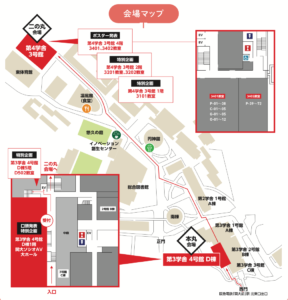
Registration
Ticket to the show
General visitors must obtain tickets in advance from here. All students other than the presenting delegates are also requested to register.
*Registration of a ribanes ID is required to obtain a ribanes ID. Also, one ribanes ID cannot be used by more than one person, so please be sure to register one person at a time.
*Parking is not available. Please come by public transportation.
Oral Presentation
-
O-01
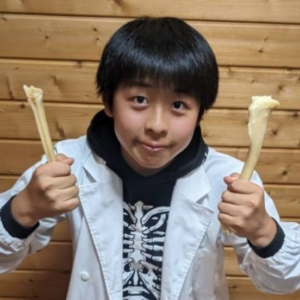 Ren Otsuka (Harrow International School Appi)
Ren Otsuka (Harrow International School Appi)Development of a biomimetics robot based on crocodile ecology
MOREThe objective was to investigate the relationship between crocodile limb bones and habitat to elucidate the habitat of extinct animals. Based on the hypothesis that the environment affects the skeleton, we investigated the limb bones of aquatic and terrestrial crocodilians and found differences in bone shape. He also believes that a robot that mimics the characteristics of the crocodile obtained in the research process would be useful for environmental surveys and transportation, and is working to develop such a robot. The robot's walking problem could be improved by reflecting the skeletal features in the robot. We believe that this could lead to the elucidation of the crocodile's body structure and gait. -
O-02
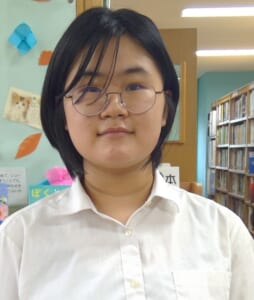 Chisuke Ren (Tokiwamatsu Gakuen High School)
Chisuke Ren (Tokiwamatsu Gakuen High School)Creation of controllers for handheld games for people with disabilities
MOREThe goal was to create a controller for people with disabilities that is easy to play with outdoors. First, we focused on the possibility of changing the ease of holding by attaching a grip. After testing four prototypes, the snowball-shaped grip was the most popular. We compared the performance of the Joy-Cons with two controllers on the market. We used this as the basis for creating the controllers. Some of them had difficulty even holding the controller. So we thought we should come up with a different idea than just holding it. -
O-03
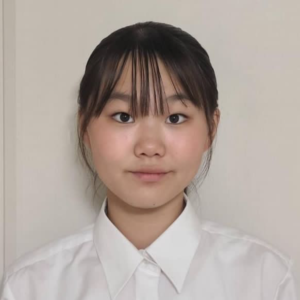 Manjun Hoshi (Uonuma Municipal Yunotani Junior High School)
Manjun Hoshi (Uonuma Municipal Yunotani Junior High School)Violets open and close - Which can be increased and which can be left behind? ~ (from the book "The Violets of the World")
MORELearn the difference in DNA between the base stock, open flowers, and closed flowers of violets. I thought that the DNA of the base stock and the closed flower would be the same, while the DNA of the open flower would be significantly different. Surprisingly, however, there was no difference. There, self-pollination may be occurring even in open flowers. We also believe that this is an important key to reproduction in the environment. -
O-04
 Theo Anton (Joso Gakuin High School)
Theo Anton (Joso Gakuin High School)Sputtering induction technology to extend the life of hole thrusters
MOREIn this study, we constructed a simulation to derive the relationship between stress and sputtering. As a result, it was found that it is possible to partially concentrate sputtering by stress. In the future, we will create an actual model and aim to develop a new life extension method to reduce the erosion of the entire thruster by guiding and replacing the erosion to unnecessary parts (sacrificial parts). -
O-05
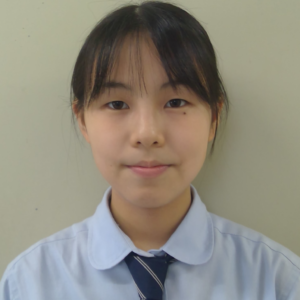 Yoyo Fujiki (Shibuya Gakuen Makuhari High School)
Yoyo Fujiki (Shibuya Gakuen Makuhari High School)Development of a beverage using thin peanut hulls and exploration of polyphenols
MOREThe goal of our research is to create a tasty and nutritious form of peanut husk, most of which is currently discarded. We solved the drawbacks of using peanut hulls, such as boiling them as tea and the astringent taste, by blending them with green tea. In particular, the CV method using carbon nanotubes has revealed that the amount of catechins extracted from green tea increases when blended with green tea, and further value in the use of peanut hulls is expected. -
O-06
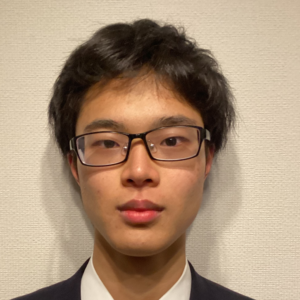 Ayuta Nabeshima (Tosa Juku High School)
Ayuta Nabeshima (Tosa Juku High School)Finger movement and claw utilization during gecko walking
MOREI decided to take a deeper look at my findings regarding finger reduction and nail utilization. First, regarding the utilization of fingernails, I considered that the fingers on the outside of the body were used more frequently. In addition, since the adhesive strength is higher on the outside of the body, I considered that the frequency of reduction was higher on the inner fingers. After observing geckos walking, we found that they deflect their fingers outward during walking, which is unique to geckos. Using this, the gecko's behavior could be deeply related to the gecko's behavior. -
O-07
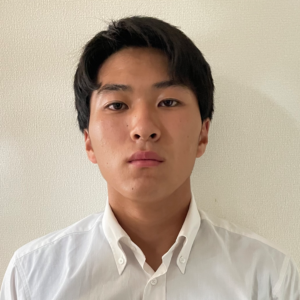 Daichi Nakayama (Sanda Gakuen High School)
Daichi Nakayama (Sanda Gakuen High School)Effect of compression supporter combination after stretching on physiological function
MOREThe purpose of this study was to clarify which conditions had an effect on physiological function: no compression garments (CG) without stretching (CL), dynamic stretching (DS), wearing CG, and DS after wearing CG. The results showed that DS after CG was effective, and the respiratory rate was lower than that of DS alone. -
O-08
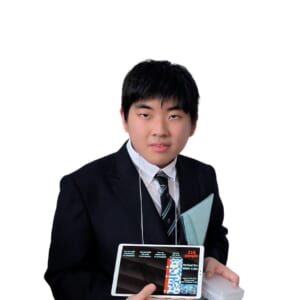 Seiichi Kondo (Shibaura Institute of Technology Senior High School)
Seiichi Kondo (Shibaura Institute of Technology Senior High School)Solving the problem of congestion at crosswalks due to the flow of people during events
MOREThe number of visitors to Roppongi Hills during the Christmas illumination lighting has increased rapidly, and difficult and dangerous traffic conditions have become a problem in recent years. From on-site surveys, we focused on the possibility that differences in behavior on pedestrian crossings could be the cause. Furthermore, thinking that the problem could be solved by setting up routes suitable for pedestrians' purposes, we created our own human flow simulation program and attempted to test our hypothesis. As a result, it was shown that certain effects could be expected from the implementation of zoning and one-way traffic. -
O-09
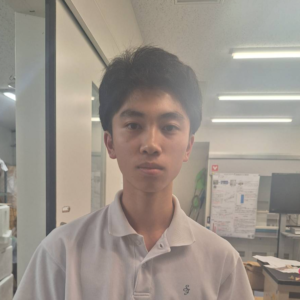 Yuriya Yoshizawa (Seochi Fukaya High School)
Yuriya Yoshizawa (Seochi Fukaya High School)Lifestyle of Mamizukuran jellyfish revealed by adherent plate survey
MOREMamizu jellyfish is a rare freshwater jellyfish that has been described as "haunting. Difficult to spot, this species is virtually unexplored in the wild. The juvenile polyps of this species spend most of their life cycle attached to something. Through laboratory studies and a year-long survey using attachment plate surveys, we have determined what this species attaches to and how it expands its habitat seasonally. -
O-10
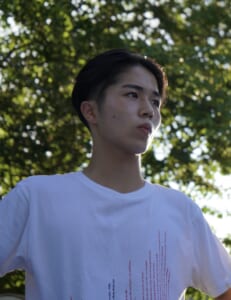 Nijito Shinobe (Steiner Gakuen High School)
Nijito Shinobe (Steiner Gakuen High School)Development of a communication robot for hospitalized children that "provides a sense of security through hugging.
MOREWith the aim of enabling the affected child to feel a sense of security through hugging even in situations where direct contact with the mother is not possible, we developed the HugBot, which enables voice conversation with the mother at a remote location while hugging the robot. As a result, although the shape of the HugBot was evaluated for its ease of hugging, it had a strong mechanical feel and lacked a sense of life, and did not achieve the sensation of hugging a human being. Considering that warmth is necessary to reproduce the sensation of hugging, we will develop and demonstrate Breath, which has human-like breathing and body temperature. -
O-11
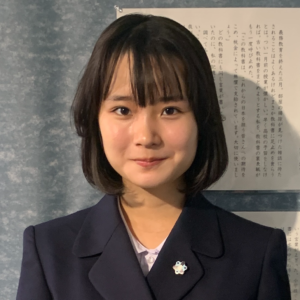 Yuki Yamaguchi (Saga Nishi Senior High School)
Yuki Yamaguchi (Saga Nishi Senior High School)Study of the life cycle of deformable fungi as a function of environmental changes
MOREThe purpose of this study was to explore the conditions necessary for the transformation of deformable fungi and to improve the efficiency of future research. We hypothesized that the transformation of a refrigerated fungal nucleus into a deformed body would reveal the time of transformation and the movement of the protoplasm from microscopic observations. We hypothesized that by applying vibration to the deformed bodies, they would become fruiting bodies. It was hypothesized that the nucleus of the mozzifolium fungus could survive for more than 8 years, and that the deformed body would initiate fruiting body formation when the protoplasm was arrested by vibration and the gel and sol sequences were intermingled. -
O-12
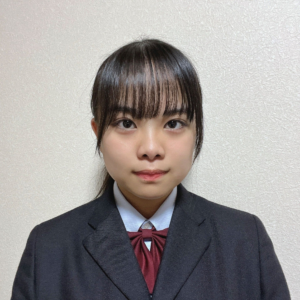 Tomojun Murakami (Rakunan High School)
Tomojun Murakami (Rakunan High School)New energy for the future that will not be discarded
MORESuccessfully converted hair and feathers into biomethane and hydrogen. The project demonstrated the possibility of effective use of resources that had been disposed of as waste as energy. Broiler feathers, which are discarded, could also be converted into resources, reducing environmental impact and improving energy efficiency. It is expected to contribute to the formation of a recycling-oriented society by reducing waste and increasing the supply of renewable energy. Use the research to propose a city of the future, where local energy can be consumed and produced locally.
Poster Presentation
<Poster presentation challenge slot (C-01-05)
In order to support more junior and senior high school student researchers, we have newly established the "Poster Presentation Challenge Slot". The Challenge Quota presentations are not subject to poster judging, but they are presentations with sufficient enthusiasm for the subject matter. Through discussions with many visitors, we hope that you will aim to make further progress in your research. We encourage you to actively interact with them.
<Poster Presentations by International Guests (G-01-05)
On the day of the conference, there will be five poster presentations by high school students from the Philippines. Although they are from different countries, we hope that you will actively interact with them as fellow researchers who are passionately engaged in the same research. Although there is no rule for English-language presentations, it might be a good idea to make a little effort to interact with Filipino high school students by writing English titles on your poster materials. Let's take this opportunity to expand our network of research colleagues overseas!
| No. | subject of an address | Name of Representative | belong to | NEST |
| P-01 | A Study on the Conservation of Fireflies in Urban Parks | harbor on a piece of land near the shore of a pond | Osaka Prefectural Tondabayashi High School | Nature |
| P-02 | Ecological research on the red-bellied newt -Exploring environmental conservation and medical contributions from the juvenile stage | Aoi Yamahata | Takigawa Gakuen Takigawa Junior High School | Nature |
| P-03 | Effects of Numatics on Gobyfish in the Lake Biwa System | Atsuya Mizuta | Takashima High School | Nature |
| P-04 | Elucidating the ecology of crow pigeons using GPS transmitters | Jirei Yamazaki | Tokyo Metropolitan Kokubunji High School | Nature |
| P-05 | Relationship between the increase of exotic borers in Imabari City and the rate of self-cutting | blowing one's own horn | Imabari Nishi High School | Nature |
| P-06 | Relationship between pollen load formation and pollen shape in honeybees. | Hinami Asaga | Nippon Institute of Technology Komaba High School | Nature |
| P-07 | On the vocal communication of crow pigeons | Otsu Kotaro | Tokyo Metropolitan Kokubunji High School | Nature |
| P-08 | Alternating turnover response in a leg amputated sowbug. | freshwater hollyhock | Takatsuki High School | Nature |
| P-09 | Attractiveness of light coloration in the yellow-bellied stink bug | Rentaro Takahashi | Osaka Meisei Gakuen Meisei Junior High School | Nature |
| P-10 | Plant Survival Strategies | Shinya Yamashita | Jyoshogakuen Junior & Senior High School | Nature |
| P-11 | Superfoods of the Future | Mei Tsubokura | Otemon Gakuin Otemae High School | Nature |
| P-12 | Potential for fiber made from weeds | Seo-Won Lee | Tokiwamatsu Gakuen High School | Nature |
| P-13 | Verification of the effectiveness of a simple animal-proof fence | Natsuko Terada | Hyogo Prefectural Tatsuno High School | Nature |
| P-14 | Primary culture of beetle larval hematopoietic cells | Akane Takada | Takatsuki High School | Nature |
| P-15 | Study of artificial incubation method for quail using chicken eggshells | Fujiwara Yukiai | Kamiyama Marugoto National College of Technology | Nature |
| P-16 | Even high school students can do it! Detecting Microplastics in Japanese anchovies | Sota Koyanagi | Tokyo Metropolitan Kokubunji High School | Nature |
| P-17 | Breeding of the diatom-associated Halichondria macrophylla. | Seisho Okada | Hyogo Prefectural Kobe High School | Nature |
| P-18 | Cultivate the "Ideal GW! 〜Toward the practical application of "Crayfish GW | Takeshi Wada | Seifu Gakuen | Nature |
| P-19 | Quantification of mold within Wakasa High School | Ayaha Hatashita | Fukui Prefectural Wakasa High School | Nature |
| P-20 | Miso and Koji | Asuka Sawashima | Shizuoka Sugoha High School | Nature |
| P-21 | Intestinal bacteria of rabbits - Relationship between Bacillus subtilis natto and Lactobacillus acidophilus | Aiba Kusumoto | Shinwa Girls High School (Individual) | Nature |
| P-22 | Rivers and Power Generating Bacteria in Kochi City | Shoya Inoue | Tosa Juku High School | Nature |
| P-23 | Development of new power generation for a sustainable society | Daichi Ando | Kobe Municipal High School of Science and Technology | Nature |
| P-24 | Examination of the effects of salt on the environment | Haruhito Tanaka | Sakuragaoka High School | Nature |
| P-25 | The Influence of Hammering in Conversation and Decision-Making | Yoshitsugu Nakamura | Osaka Meisei Gakuen High School | Nature |
| P-26 | Effects of unstable shapes on word memory | Kousuke Kimura | Takatsuki High School | Nature |
| P-27 | Basic research on the intensity of cognitive load imposed on users by the content and format of information presentation | Keisuke Kamiyoshi | N High School | Nature |
| P-28 | Rigidity analysis of unilobate hyperbolic structures | Simmons Aika | Nagata High School | Engineering |
| P-29 | Reproduction of soccer trapping motion by a leg robot | Hideaki Iyoh | Hiroo Gakuen High School | Engineering |
| P-30 | Creation of E-Rac, a social networking service to reduce caregivers' emotional distress. | Yuichiro Iwato | Okayama Kozan High School | Engineering |
| P-31 | Tell educators and supporters how you feel about the world | Yuto Deguchi | Higashihiroshima City Isomatsu Junior High School | Engineering |
| P-32 | Can we eliminate prejudice against appearance? | Rihanna Ishiyama | Tokiwamatsu Gakuen High School | Engineering |
| P-33 | Slit Dam Revolution - Frontline of Sediment Management to Protect the Environment | Keigo Katsuya | Hamamatsu Gakugei High School | Engineering |
| P-34 | Specific diet and digestion of millworms from the viewpoint of gut microbiota. | Nao Ishida | Waseda University Advanced Institute of Technology | Engineering |
| P-35 | Battery-based diagnosis of coral health! | Ayuka Nishikawa | Osaka Kyoiku University Senior High School Ikeda | Engineering |
| P-36 | Development of a wind turbine for wind power generation by applying the seeds of the Iroha maple tree. | Ayano Kishimoto | Wakayama Koyo High School | Engineering |
| P-37 | Influence of atmospheric pressure change on periodic motion of a pendulum and its application to meteorological observation | Ryota Kinoshita | Saemi Private High School | Engineering |
| P-38 | Splattering of water droplets from umbrellas | Aimi Fujimoto | Hyogo Prefectural Nagata High School | Engineering |
| P-39 | Spring-like properties of liquid torus | Aoi Narutaki | Hyogo Prefectural Kakogawa Higashi High School | Science |
| P-40 | Mpemba phenomenon and convection | Mizuki Ishida | Aichi Prefectural Meiwa High School | Science |
| P-41 | Bacterial Growth in PET Bottled Beverages | Kuna Tao | Takatsuki High School | Science |
| P-42 | Plastic Degradation by Honey Worms | Nozomi Oda | Hiroshima Kokutaiji High School | Science |
| P-43 | Can jellyfish be superabsorbent polymers! | Mako Ciel | Kobe Municipal High School of Science and Technology | Science |
| P-44 | Plant-to-plant communication in improved vegetable varieties. | Meihiri Narita | Takatsuki High School | Science |
| P-45 | Creating a substitute for kiwi - Establishing a method of odor extraction | Sanaa Zaozu | Fukui Prefectural Wakasa High School | Science |
| P-46 | Histological Analysis of Dorsal Root Ganglia in Rats Exposed to Methylmercury | Misaki Ozawa | Hiroo Gakuen High School | Science |
| P-47 | Development of a Quantum Annealer Method for Calculating Small Molecular Potential Energy | Rinka Miura | individual | Science |
| P-48 | Consideration by inversion of polar lines Ax+By=1 and poles (A,B) | Ryota Kataoka | Tokushima Prefectural Wakimachi High School | Science |
| P-49 | Analysis of local phenomena, etc., that affect the accuracy of weather forecasts | Takemoto, Shinno | Fujimigaoka High School | Science |
| P-50 | Let's cover the streetlights! ~Light Pollution and Star Visibility~! | man of noble character | Osaka Meisei Gakuen Meisei High School | Science |
| P-51 | Resolving Structural Discrimination - In the Context of Gender Socialization | Hirano cherry (Prunus avium) | Fukui Prefectural Wakasa High School | Science |
| P-52 | Achieving a Gender-Equal Society - Male Unconscious Bias | Shiori Yazaki | Tokiwamatsu Gakuen High School | Technology |
| P-53 | Fostering Youth Actively Involved in Politics through Games | Mikiko Toda | Tokyo Gakugei University High School | Technology |
| P-54 | 3D Sudoku | Shuri Nakamura | Hatsushiba Ritsumeikan High School | Technology |
| P-55 | Creating toys that make learning fun for young children | Purple sail of Yamazaki. | Okayama Kyozan Junior High School | Technology |
| P-56 | Patch Level Training in Japanese Continuing Pre-Learning | Kazuma Matsumoto | Takatsuki High School | Technology |
| P-57 | Development of MBCT, an Attention Training Method in Children's Homes | Butina Sato | Hiroo Gakuen | Technology |
| P-58 | Development of a discovery sharing system for the elderly with dementia. | Taiyo Mizuno | Nara Women's University Secondary School | Technology |
| P-59 | Development of a system to support care and nursing using Spresense | Rikako Ueda | Nara National University Organization | Technology |
| P-60 | Development of a new tablet container using Raspberry Pi pico and its potential for practical use | Keito Kinoshita | Osaka Meisei Gakuen Meisei Junior High School | Technology |
| P-61 | Prevention of loss of remote control by a device using RaspberryPi | Yusuke Mori | Okayama Kyozan Junior High School | Technology |
| P-62 | Development of an application that automatically composes music using alphabetical sequences | Hiroto Wakasa | Okayama Kyozan Junior High School | Technology |
| P-63 | Effects of light wavelength and oxygen concentration on the curing time of lacquer | red feather | Kobe Municipal High School of Science and Technology | Technology |
| P-64 | Development of concrete using plastic waste materials and concrete that becomes more environmentally friendly the more it is built. | Hiyo Iino | Yamanashi Prefectural Nirasaki High School | Technology |
| P-65 | Build a seismic isolation platform that prevents objects from falling over in an earthquake. | Aixia rice | Matsumoto Kenkaoka High School | Technology |
| P-66 | Dainagon Azuki Bean Hand Cream! ~Research for an environmentally friendly hand cream that can be used by adults and children alike~! | Ayeri Uemura | Kameoka High School | Technology |
| P-67 | Development of speaker boxes with adjustable acoustic characteristics | Tatsuki Shibuya | Hyogo Prefectural Toyooka High School | Technology |
| P-68 | How to cleanly cut glass with scissors | Sojiro Ishikawa | Okayama Prefectural Kurashiki Amagi Junior High School | Technology |
| P-69 | Possible germination and growth inhibitory substances in Japanese knotweed (Spiraea japonica) | Aozora Takashima | Yamagata Prefectural Tozakuragakkan High School | Technology |
| P-70 | Development of a sustainable portable direct ATP supply system | Marako Shimoyashiki | Minoh Jiyu Gakuen High School | Technology |
| P-71 | Utilization and Mechanism of Energy Conversion by Diatoms | Keto Ogi | Yawata Technical High School | Technology |
| P-72 | Development of aseptic seeding experiments without expensive equipment | Asuka Kunitake | Hyogo Prefectural Tatsuno High School | Technology |
| C-01 | Data Scientist Training Courses | Yoshihiro Okazaki | Okayama Kyozan Junior High School | Technology |
| C-02 | Healthy mind with "Homenyan | Hinata Tanahashi | Tokiwamatsu Gakuen High School | Technology |
| C-03 | Create Miyajima's strongest old private house cafe and momiji manju shop! | Hina Umemoto | Sanyo Jogakuen High School | Engineering |
| C-04 | Allergy Coexistence Project | Misa Saito | Tokiwamatsu Gakuen High School | Technology |
| C-05 | Career Paths for Children in the Toyoko Neighborhood | Ayano Fukui | Tokiwamatsu Gakuen High School | Engineering |
| G-01 | Evaluation of Broadleaf Lady Palm (Rhapis excelsa) Extract as a Natural Hypoglycemic Agent in Alloxan-Induced Diabetic Albino Rats (Rattus albus) | Dave Daniel E. Surdilla | Muntinlupa Science High School | Nature |
| G-02 | Mathematical Modelling of the Glycolytic Pathway of Cancer Cells under Varying Oxygen Levels | Benedict John Caperocho | Muntinlupa Science High School | Nature |
| G-03 | Traffic Light Phasing Optimization at Four-Phase Cross Intersections using TraffiX Equation in Simulation of Urban Mobility (SUMO) | Max Angelo Basio | Muntinlupa Science High School | Engineering |
| G-04 | TIMON: Transport in Marine Ocean Navigation: Exploring Renewable Power Sources with Robotics | RIZALYN CREDO MARCELO | Top Link Global College Inc. | Nature |
| G-05 | Sustainable Metal Paint: Enhancing Anti-Corrosion and UV Resistance with Calcined Calcium Carbonate from Slipper Oyster (Crassostrea iredalei) Shells and Fumed Silica | Jasper Vincent L, Biscocho | Muntinlupa Science High School | Technology |
Oral Presentations Judges
-
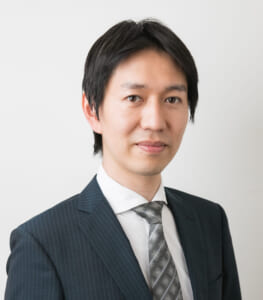 Toshihiro Ishizawa
Toshihiro IshizawaGeneral Manager, Strategic Development Division, Liverness, Inc.
MORED. (Life Sciences) from the Graduate School of Frontier Sciences at the University of Tokyo in 2007. D. in Life Sciences from the University of Tokyo in 2007. After an internship period of about 3 years during his doctoral studies, he joined LIVERNESS Corporation in 2008. After serving as the General Manager of the Osaka Office and the General Manager of the Regional Development Division, he has been the General Manager of the Strategic Development Division since 2022. He is involved in building a regional ecosystem to create R&D-oriented ventures that will spread their wings to the world from research institutes in various regions using the concept of "Tech Planter," and supporting new business creation of core regional companies. -
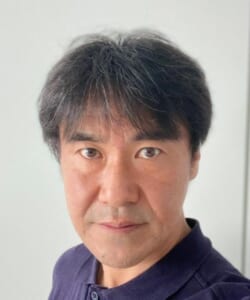 Kentaro Eto
Kentaro EtoManager, Business Development Planning Section, Business Development Management Department, Engineering Headquarters, Industrial Equipment Division, THK Corporation
MOREAfter graduating from university, he joined THK Co. After working in sales engineering and sales, he joined a project to develop new fields in 2000 and was in charge of developing modules for home appliances, medical equipment, and amusement equipment. He was in charge of developing modules for home appliances, medical equipment, and amusement equipment. He expanded sales of the LM system, which had been a component mainly for the industrial equipment field, to the consumer products field. Later, he was in charge of planning work in the Business Development Management Department, whose mission was to create new businesses. On the other hand, he launched "THK Co-education PJ" with RIVERNESS, Inc. and is struggling to convey the joy of manufacturing to junior high and high school students every day. -
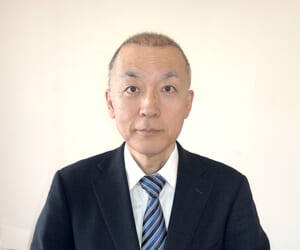 Hiroaki Kumaki
Hiroaki KumakiDirector, Development Research Center, Total Media Development Institute, Inc.
MOREAfter working for 6 years in the SP department of a major house builder, he joined Total Media Development Institute, Inc. in 1992. Engaged in consulting and planning proposals for cultural projects for national and local governments and major companies. Engaged in MONODZUKURI exhibition for the Ministry of Economy, Trade and Industry, overseas research for the National Archives of Japan for the Cabinet Office, and other projects. After serving on the board of directors of the Japan Institute of Exhibitions, currently serves as a member of the Kids Design Council. -
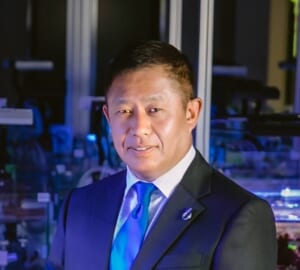 Masato Ueda
Masato UedaProfessor, Faculty of Chemistry and Biotechnology, Kansai University
MOREBorn in Osaka in 1974. After graduating from the Faculty of Engineering, Kansai University, he conducted research on phase transformation at grain boundaries at the Graduate School of Engineering, Osaka University, where he received his Ph. After working as an assistant at Osaka University, an associate professor at Kansai University, and a visiting researcher at the University of Cambridge, UK, he became a professor at the Faculty of Chemistry and Biotechnology, Kansai University in April 2017. He joined INOCA as CTO in June 2022. On weekends, he is an American football player. -
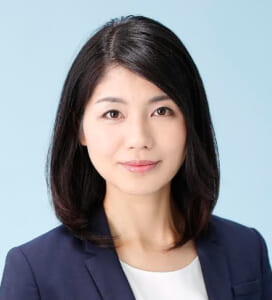 Natsuko Miura
Natsuko MiuraAssociate Professor, Department of Biofunctional Chemistry, Graduate School of Agriculture, Osaka Public University
MOREHe graduated from the Department of Applied Bioscience, Faculty of Agriculture, Kyoto University in 2007, and withdrew from the doctoral program of the Graduate School of Agriculture, Kyoto University in 2012 with a teaching certificate, and received his doctorate in 2013. He worked as a postdoctoral fellow at the University of Toyama's Center for Advanced Life Sciences and the National Cancer Institute in the United States. After working as a research fellow at the Graduate School of Agriculture, Kyoto University, he became an assistant professor at the Graduate School of Life and Environmental Sciences, Osaka Prefecture University in 2018, an assistant professor at the Graduate School of Agricultural Science, Osaka Public University in 2022, and an associate professor in 2023, where he currently serves.
keynote speech
Lectures for visiting middle and high school students and teachers will be given by researchers from universities and other research institutions engaged in advanced research, as well as by entrepreneurs of R&D ventures.
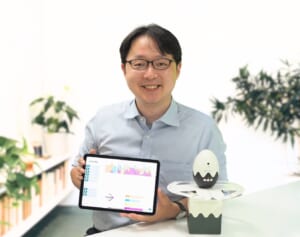
Mr. Takeshi Mizumoto
HiLable, Inc.
representative director (i.e. someone chosen by the board of directors from among the directors to actually represent the company)
Lecture Title
Enjoyment of "sound" from chorus of frogs to visualization of conversation and bustle
I founded Hi-Lable with the mission of "enriching communication through sound environment analysis." We are engaged in the business of visualizing group work in school classes and corporate training programs, and visualizing the liveliness of various spaces such as offices, exhibitions, and parks. Hi-Lable's business has its roots in my university research on frog choruses. In my presentation, I will introduce the technology of Hi-Lable, how I came up with the idea of human conversation from frog chorus research, and the fascination of researching "sound".
.
Graduated from Osaka Prefectural College of Technology (at the time) and transferred to the Faculty of Engineering, Kyoto University, and completed the Graduate School of Informatics, Kyoto University in 2013. D. in Informatics. At university, he was engaged in research on mathematical modeling of the chorus of Japanese tree frogs. He then worked at a corporate research institute before founding HiLable, Inc. in 2016. He has analyzed more than 100,000 conversations so far.
special project
Workshops and panel discussions will be held from 16:00-16:45. There will be a special program exclusively for this occasion, so please join us.
Engineering Materials! ~Air Pollution Kit Trial Session~.
Planning Partner: James Dyson Foundation
Subject: Teachers
James Dyson established the James Dyson Foundation to connect the classroom with real-world engineering challenges through hands-on learning. In this session, we will discuss the company's "Engineering Education" program, which has been developed by the company and used as engineering education in middle and high schools in various countries, especially in Asia.Air Pollution KitThe "MARUZA" is available to experience the "MARUZA".
Manufacturing exploration materials that "allow students to freely experience trial-and-error
Planning Partner: THK Corporation
Target: Students, teachers
This project supports junior high and high school students who are willing to take one step, half step, or even 0.1 step toward their own way of "making things.Manufacturing 0." can be used for club activities, events, and exploratory classes.Manufacturing exploration materials for "automatic sorting trash cansfor free, with rentals available as soon as April-May. We invite you to participate in the experience of putting actual teaching materials into action with this project! With the help of our technology teachers in the development of this program, we have been renting it since 2022 and have received positive feedback from a cumulative total of over 6500 students who have had the opportunity to experience it.
Let's work together to develop a science museum project that supports research and exploration activities of middle and high school students!
Planning Partner: Total Media Development Institute, Inc.
Target: Students, teachers
We would like to exchange opinions directly with junior and senior high school students and think together about what we can do to make the Science Museum a place where your research and exploration activities can be more interesting and deeper. What kind of things do you want the Science Museum to support? We would like to use your ideas as the driving force behind the future of the Science Museum, including exchanges with researchers in various fields, support for research, creation of places for advanced inquiry learning, and representation and technical support for research presentations!
Let's use 3D printers in the classroom! 〜Senior Teachers' Know-How!
Planning Partner: Nippo Corporation
Subject: Teachers
As a DX High School, we are interested in 3D printers, but we don't know what to do about it. This is recommended for such teachers!Nippo CompanyWe will introduce a lesson plan by Mr. Masaki Nakaoka (Minoh Jiyu Gakuen), a teacher fellow who has been expanding the possibility of using 3D printers in schools together with his colleagues at Minoh Jiyu Gakuen. He will also present the process of trial and error he went through as a 3D printer beginner and the real reactions of his students. Please join us for this project where you can actually experience 3D printers and 3D CAD!
Dive into Water Research - Challenging Environmental Research on Rivers
Planning Partner: Focus Systems Inc.
Subject: Students
What actions can we take to ensure the future of the global environment?TASUKI-ProjectThe project is challenging the assessment of aquatic biodiversity in the field of Lake Biwa, a river that connects to Tokyo Bay. In this project, participants will experience water quality survey experiments together with junior and senior high school students who participated in the project. Participants will also deepen exchanges while thinking about the differences between the river environments in Japan and the Philippines. Let's think about the environment around us beyond national borders.

